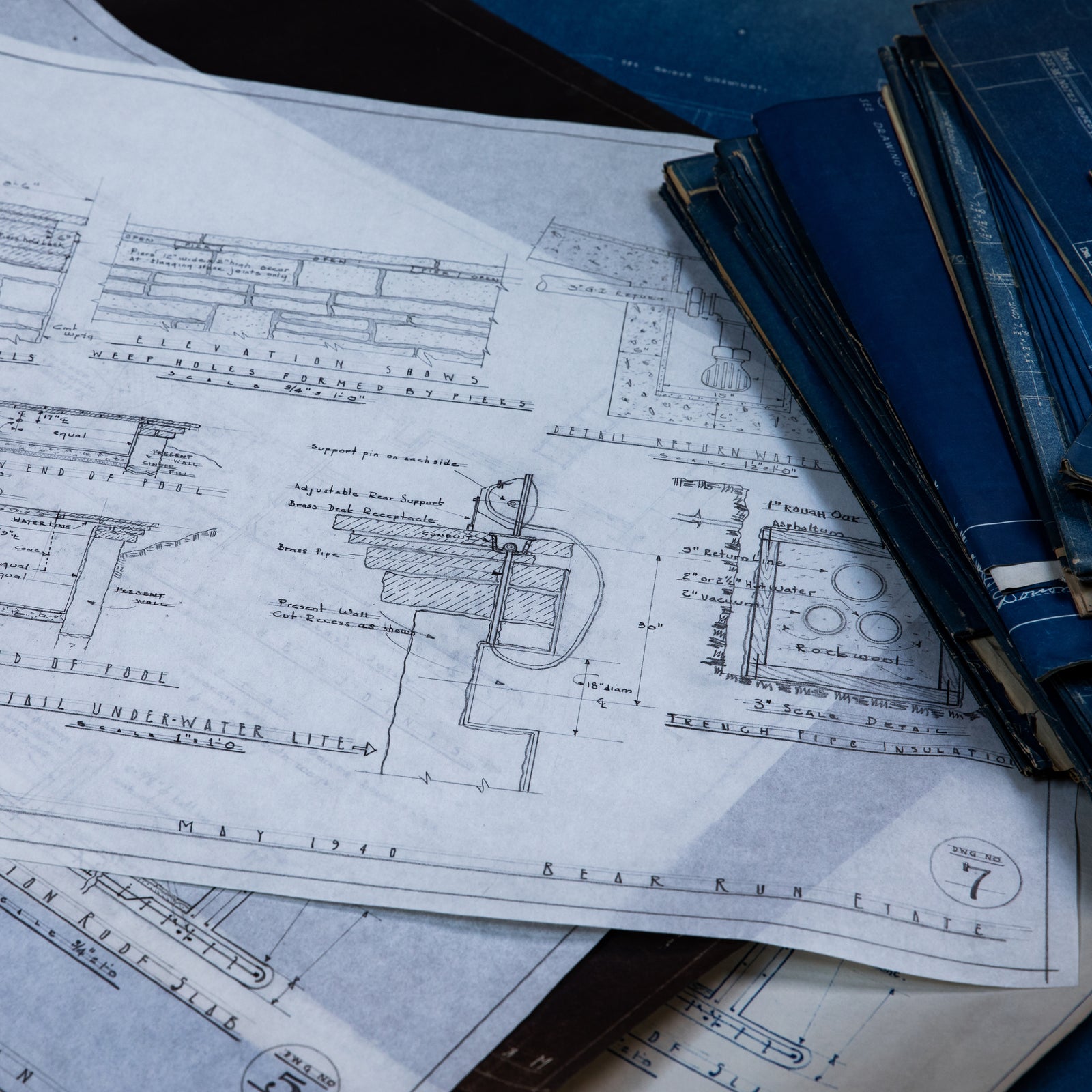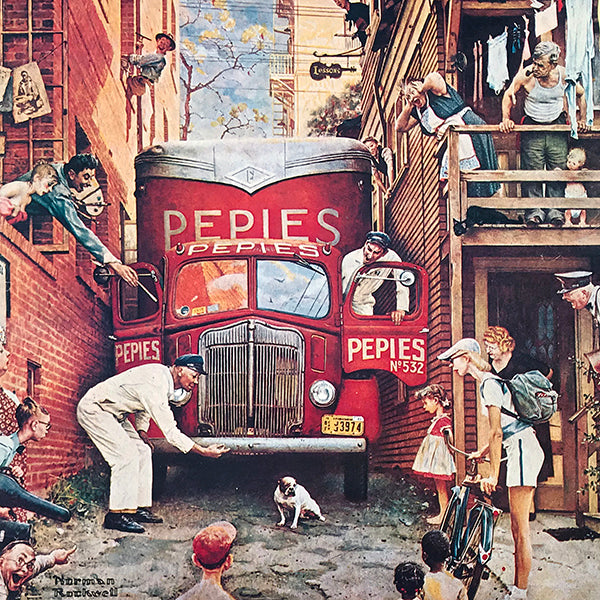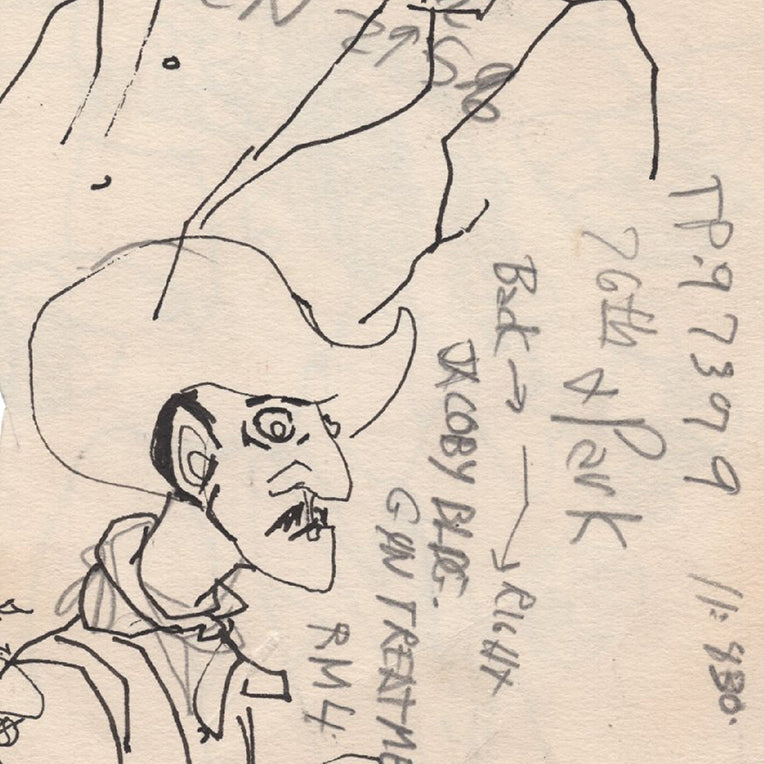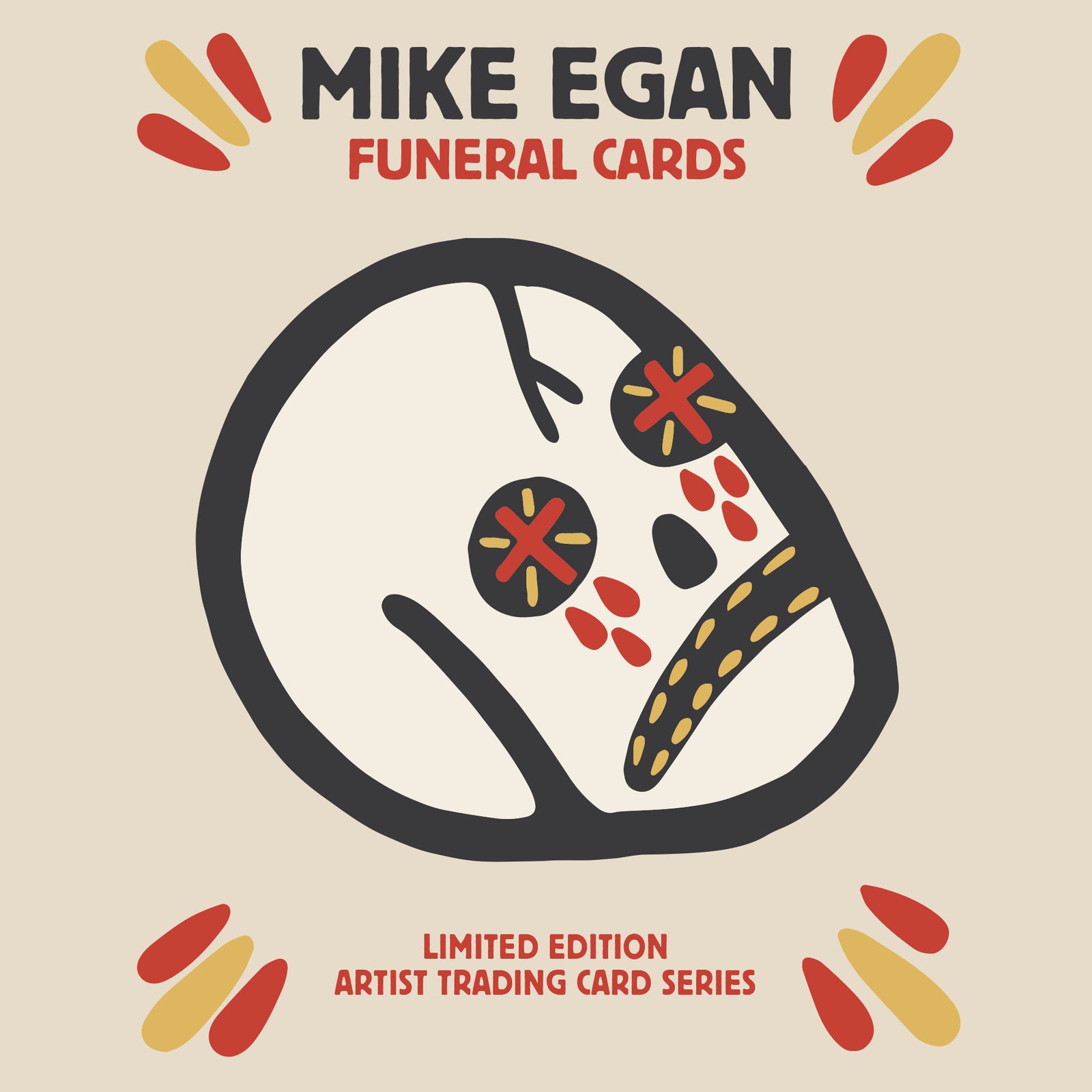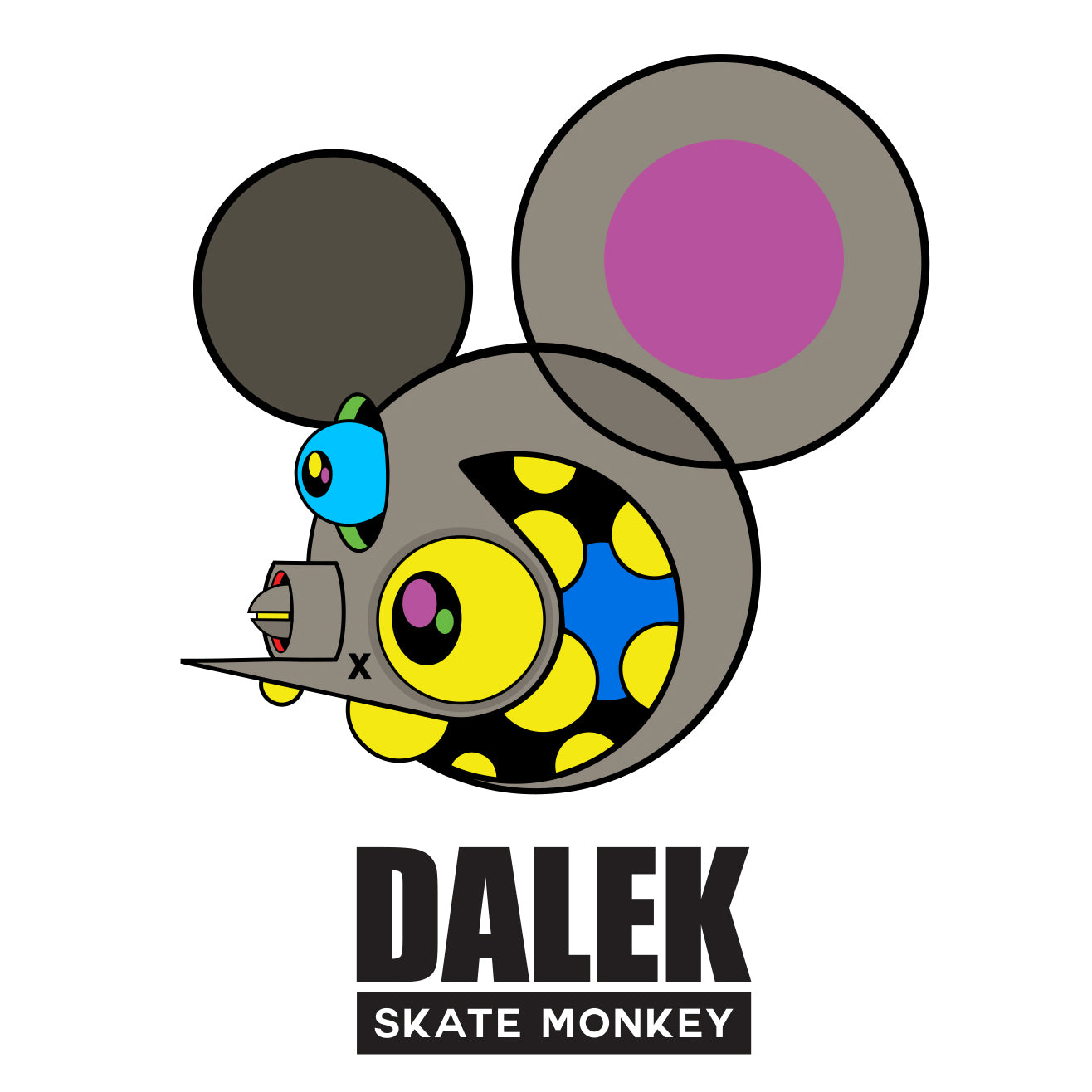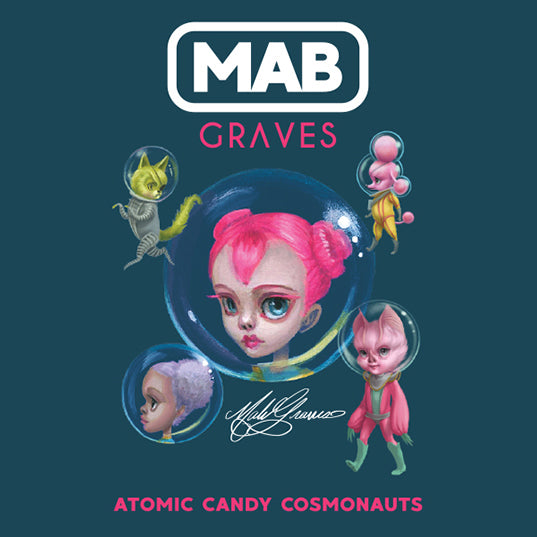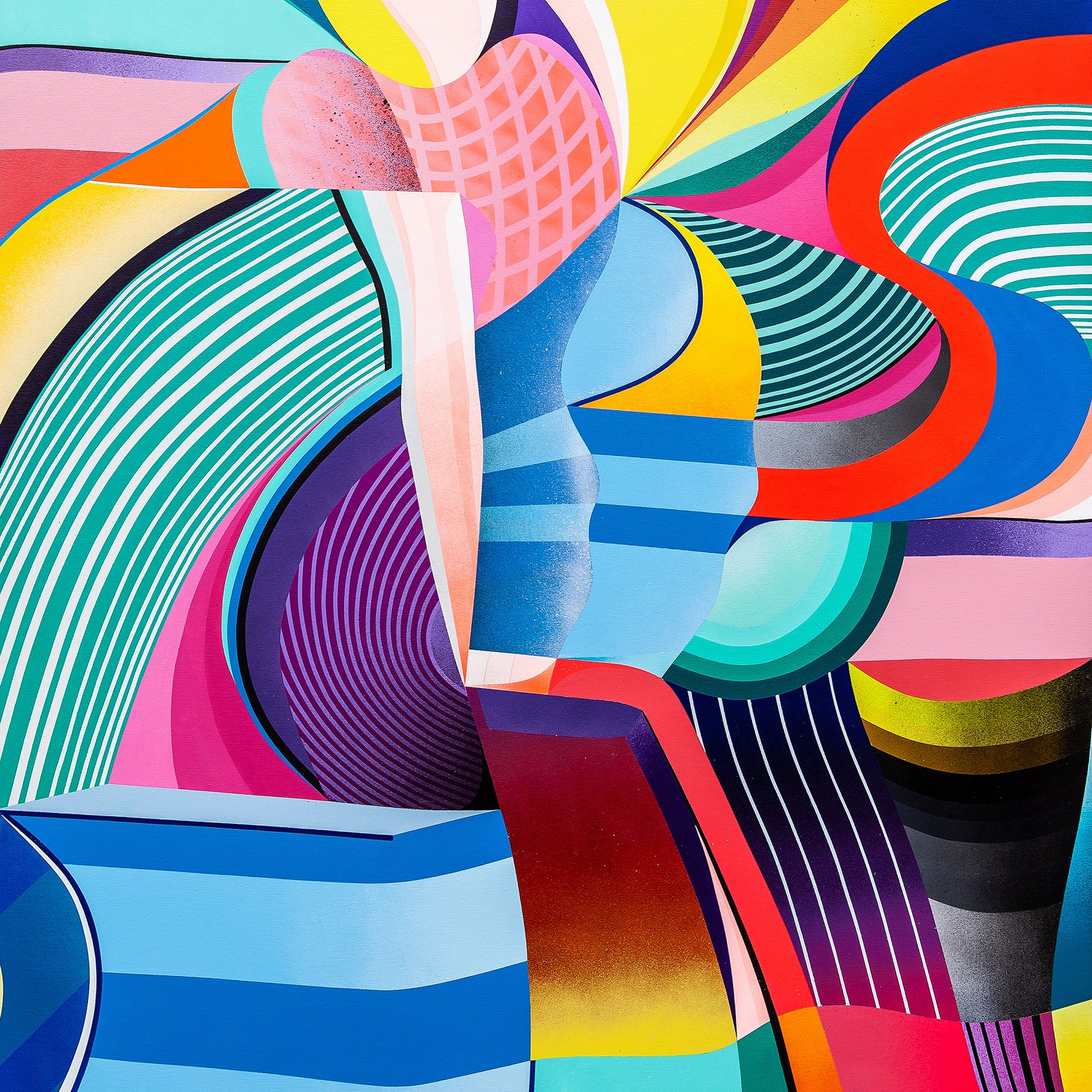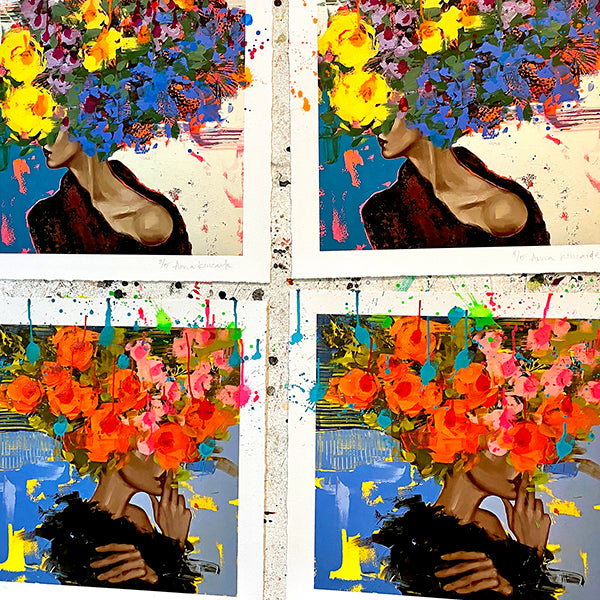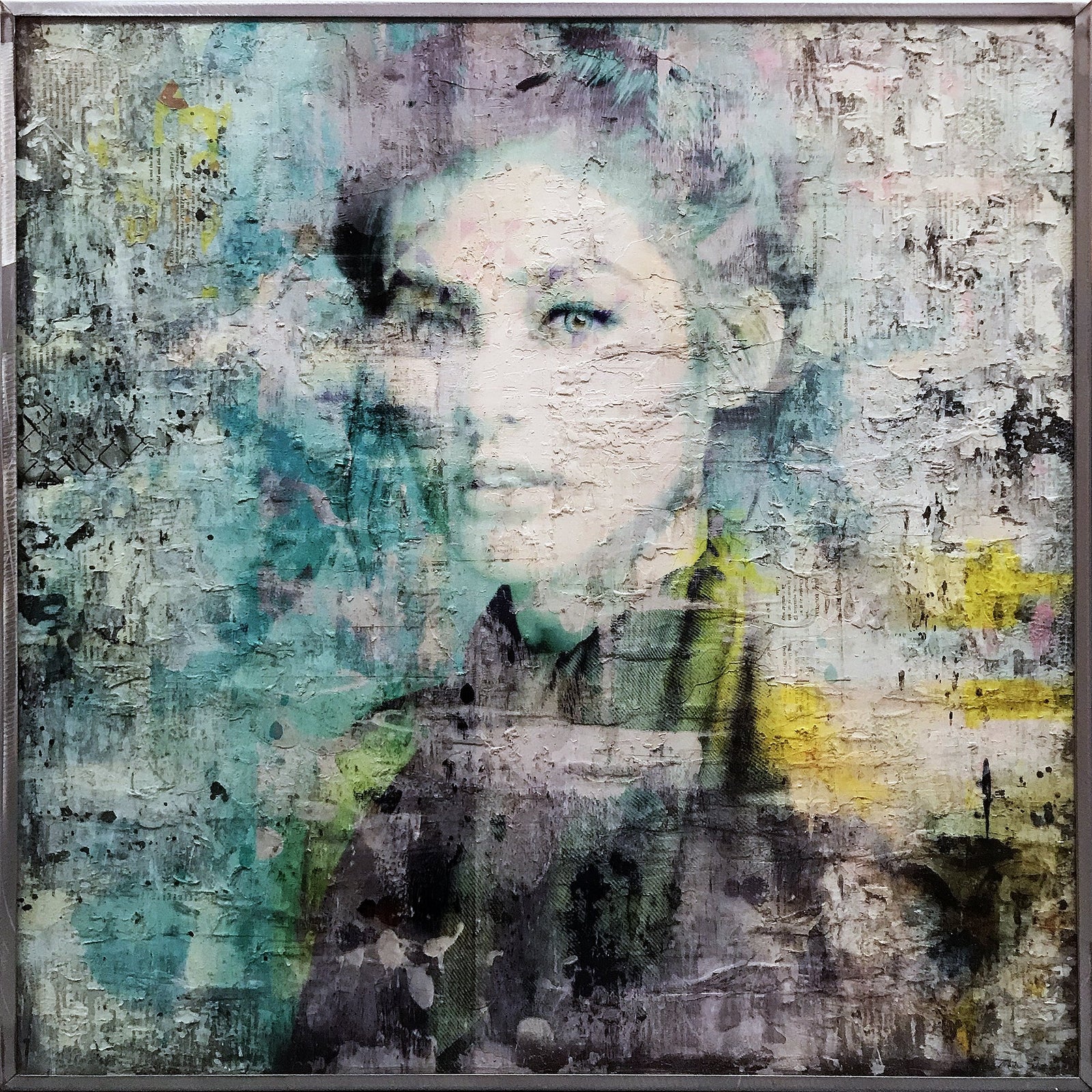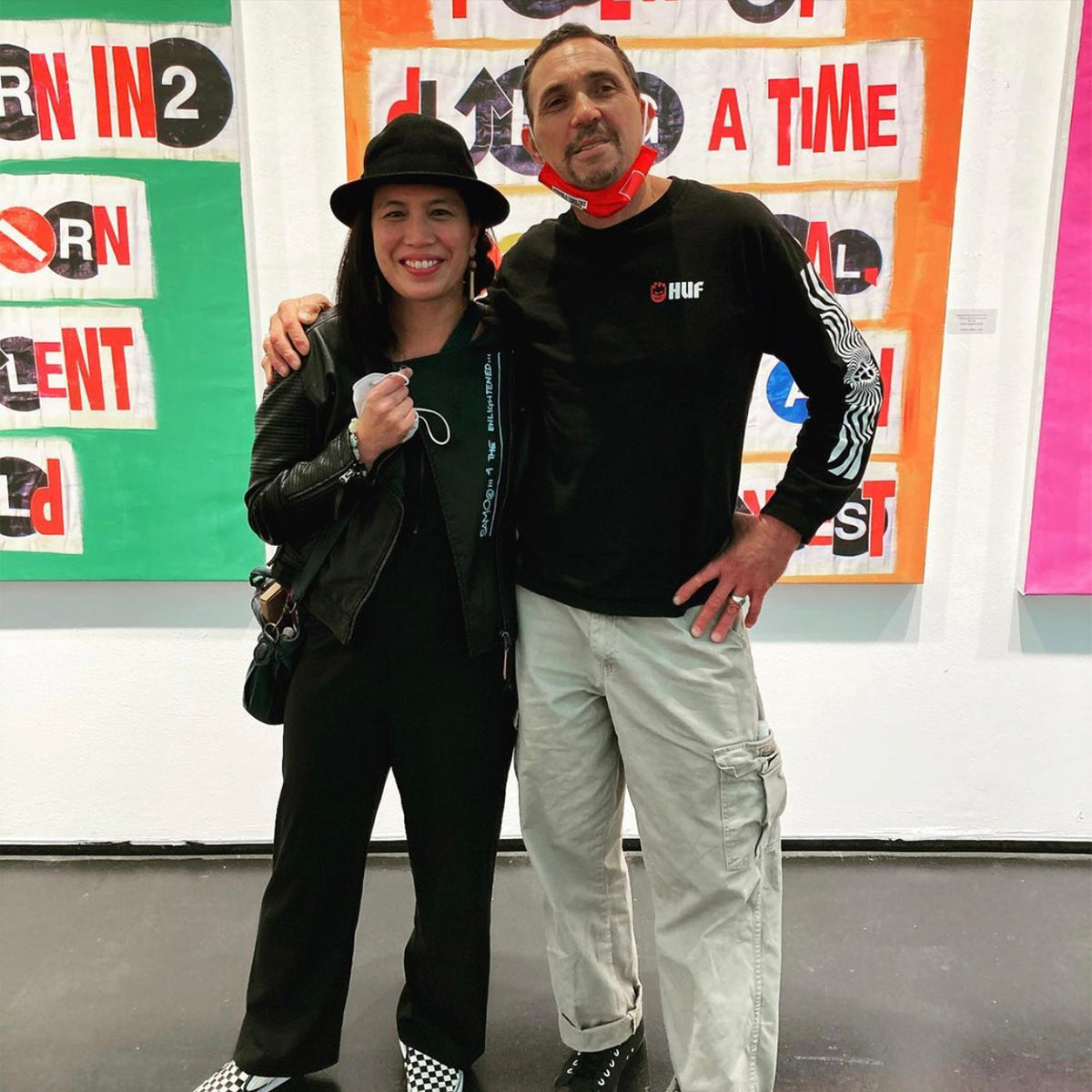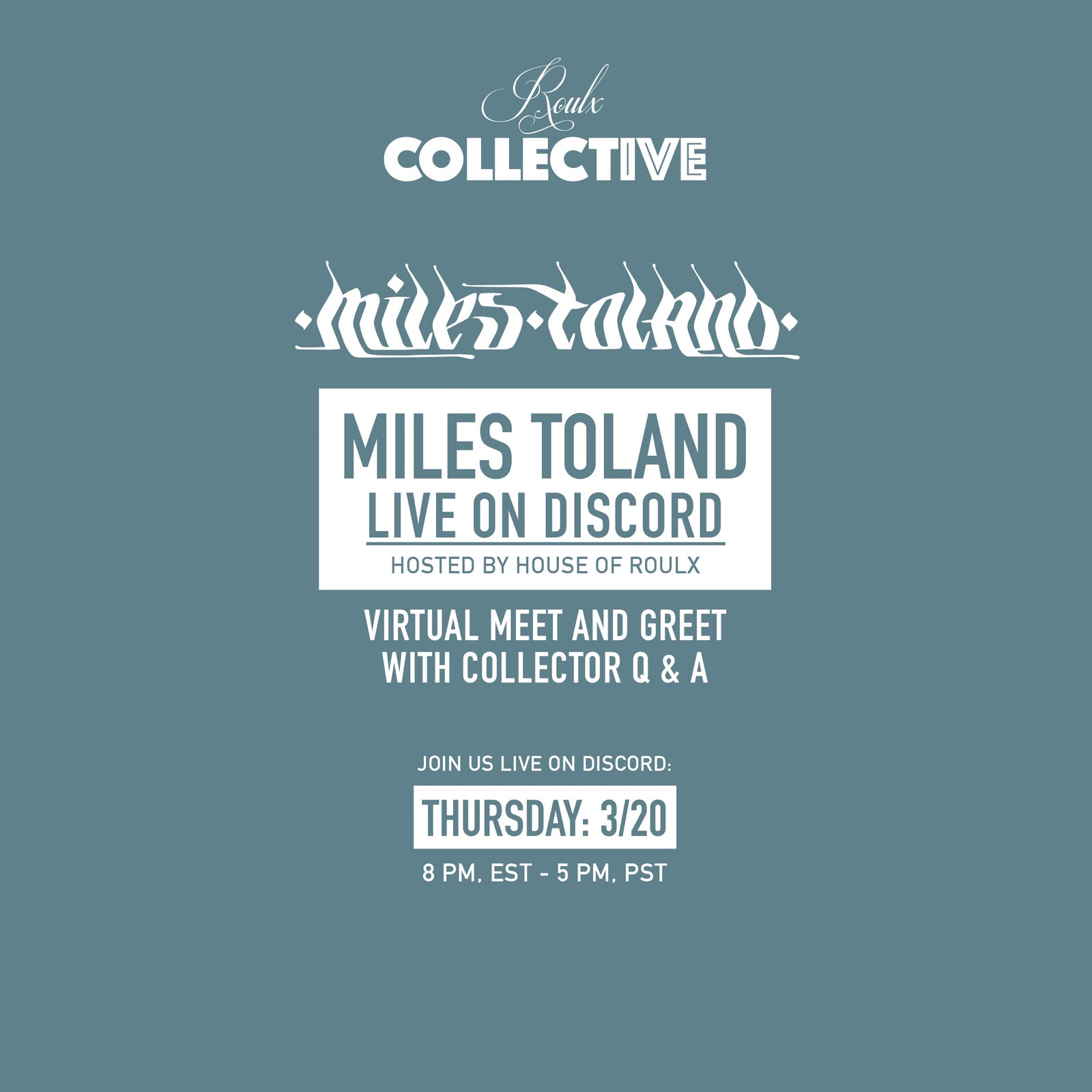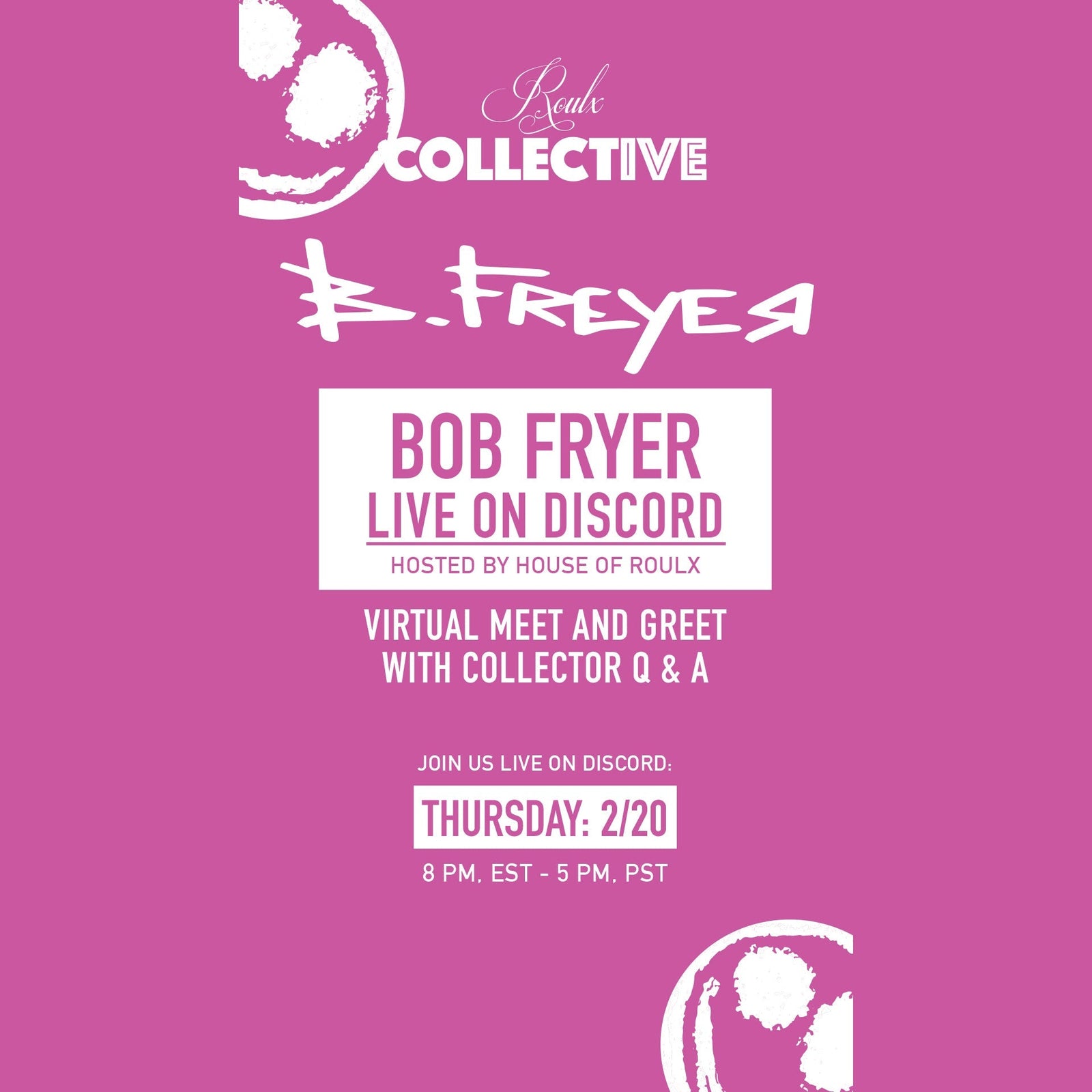The Street Wisdom of Al Díaz, a First-Generation Graffiti Artist

In the very commercialized genres of street art and graffiti, Al Díaz, at 61, still commands an inimitable point of view. Disinterested in creating shiny balloon animals full of air or spectacle without substance, Díaz offers intricate wordplay using the everyday ephemera of New York’s subway system lexicon. As a first-generation graffiti artist, Díaz innovates the alphabet and coded language to communicate and to provoke. Or put another way, Díaz has something real to say.
Although many discussions on Díaz begins with his partnership with Jean-Michel Basquiat in the late 1970s, Díaz’s primary collaboration of consequence belongs to the one he nurtured with his cool older cousin, Gilberto “SIETE” Díaz who lived uptown in Washington Heights. This hood is what Díaz rightly cited in a 2018 interview at Cherokee Gallery in St. Louis as, “The spawning grounds for New York City graffiti culture, the name, and number culture.” In 1971, the older primo Díaz introduced 12-year-old Albert to the genie in a spray can around the now-infamous Writers’ Corner on West 188th Street and Audubon Avenue. “None of this was visible in the Lower East Side, but I was impressed with this.”

Subsequently, Díaz brought graffiti from uptown to Loisaida where he lived at Jacob Riis Houses among other recent immigrant Puerto Rican families. Now based in Brooklyn, Díaz explains that not unlike the grammar of any developed language, graffiti had strict rules, and any exception had to be earned or invented. Díaz described one formula for tags: “Your nickname and then a significant number.” As the custom of nicknames happens, sometimes you don’t have a choice about what sticks. And the story goes that one of Díaz’s buddies called him “Bomb” because of his explosive personality. For Díaz, he would become “Bomb-1” because he was the first one.

When something is hilarious enough, Díaz stomps. His foot comes down hard with each laugh. He has made me belly laugh until it aches with his observations of pedantic social absurdity that know no boundaries or fear. I think about this a lot when recalling him and Basquiat boldly jumping the turnstiles of the white elite art world and then mooning them with glee. Need the visual? In the current exhibition at Howl Arts downtown, Al Díaz: A Subterraneous Journal, viewers can catch a handful of black-and-white photos of Basquiat and Díaz, including their bare bottoms bent in glorious defiance. On May 30th at Howl, Diaz will have a public conversation with fellow Puerto Rican pioneering artists, Luis Guzmán, Lee Quiñones, Pepe Flores, and Sandra Santana.

At the alternative high-school, City-As-School, Basquiat and Díaz experimented with slogans and hype culture with the text series, “SAMO©.” And the rest is art history (with all of its omissions). In 1978–79, the SAMO© squad planted sardonic missives around downtown Manhattan and created a buzz that landed them a feature in the Village Voice. In the article, “SAMO Graffiti: BOOSH-WAH or CIA?” a photo misidentifies Díaz in the caption as squatting instead of standing. This error signaled the frequent misrecognition and coming erasure of Al Díaz as Basquiat’s co-conspirator and key ambassador to graffiti art and hip-hop culture.

But as one of Díaz’s latest sculptural works denotes: “A CIRCLE IS CONSIDERED MOST PERFECT OF ALL FORMS. IT IS OMNIPRESENT. CAN ILLUSTRATE NOTIONS OF GOD, TOTAL SELF, A PROCESS OF TRANSFORMATION AND TIMELINESS.” Diaz would tragically lose his other-brother-from-another-mother in 1988 to addiction and be likewise trapped in it for many years. And then in 2010, upon viewing his self-presentation in the film Jean-Michel Basquiat: The Radiant Child by mutual friend Tamra Davis, found the impetus to change his life. In the wake of the 2016 election, Díaz resurrected the SAMO© series and set the record straight about his contribution to it on his terms with the clarifying document and archival book, SAMO … SINCE 1978.
Graffiti’s grammar, vocabulary, and naming science shows up in Díaz’s current etymology through appropriated WET PAINT signs and subway lettering. “For me, the subway and graffiti are almost synonymous,” Díaz schools me as we descend the steps towards the 2nd Avenue station to hop on the F train from Howl. But first, Díaz spots a WET PAINT sign and peels it off the buttoned steel column. “I like when it has a little paint on it,” he points to the deep green drips edged on its side. We dodge around the platform’s grid on a mission to collect each sign. There are a few that are ripped in half, and Díaz notes, “Ah, this means they were running out of signs; so, they had to improvise.”
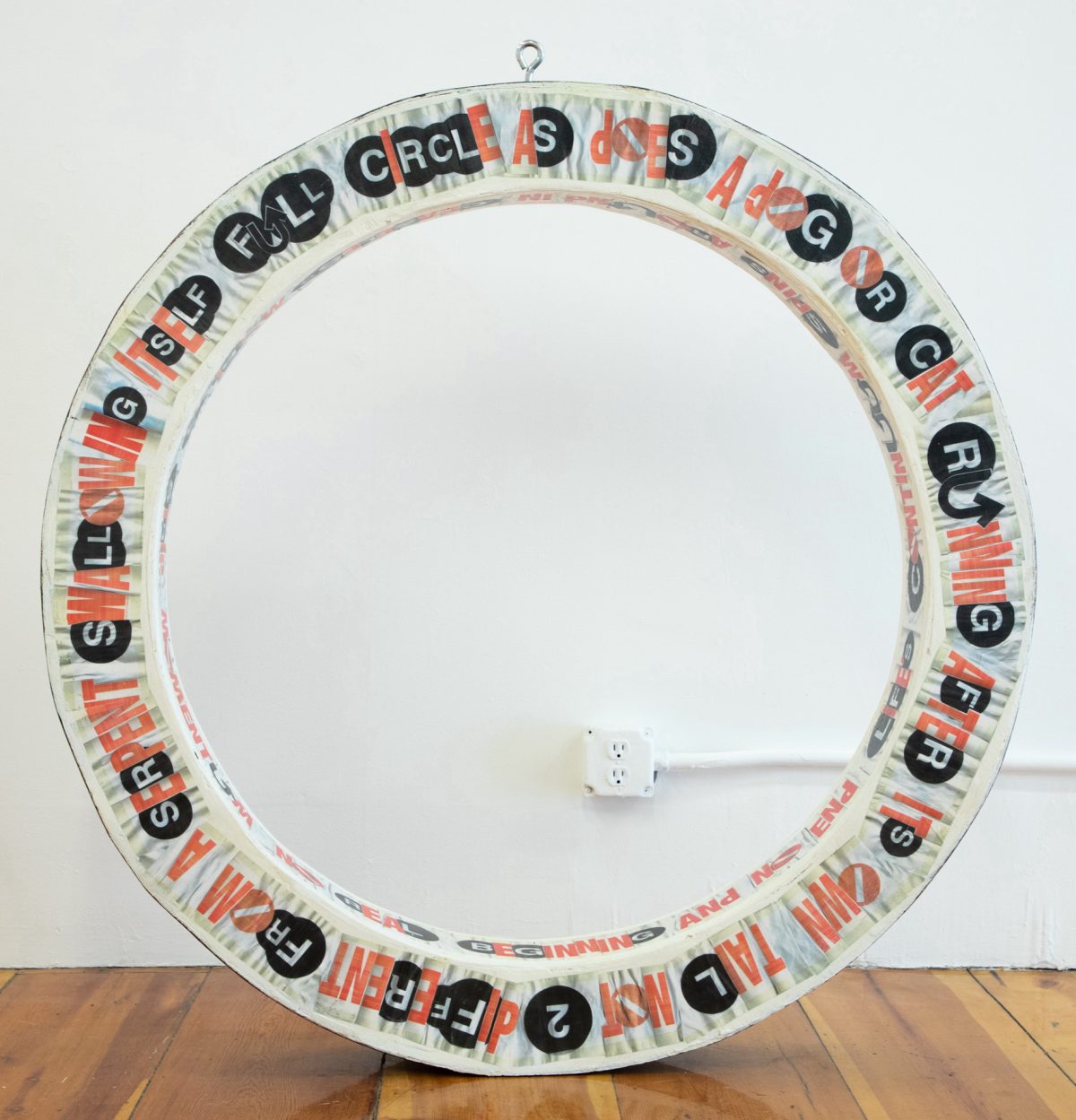
At first blush, Díaz’s collage of subway lettering requires work from the reader. The letters vary in size, shape, and color like an anonymous ransom note. Similar to identifying the letters of wild-style graffiti and other inscrutable forms, deciphering the message is part of the reward. The viewer willing to put in the effort moves closer to its meaning. For example, the large-scale text art that meets you upon opening the gallery door declares: “AFTER A PROLONGED PERIOD OF ISOLATION AND CONFINEMENT, WE BECAME FEARFUL AND SUSPICIOUS.” Harkening back to SAMO©’s critique of Big-Brother speak, Díaz again holds a mirror up to the pernicious ways mass media’s misinformation begets social control.

A couple of blocks beyond Howl, under the sign of Bowery’s Martial Arts Supplies, Díaz applied stencils to create a mural that reads “SPRING, NATURE’S MOST OPTIMISTIC GESTURE.” Through a grin, he says, “Yes, it’s cheerful,” as if its positivity surprised him too. But I believe he knows his New York downtown audience quite well. After the last several years of what poet Gil Scott-Heron might call Winter in America, Díaz knows how badly we needed that change of season, the sun, and the rain.
For those who want to experience street art extravaganza, your better bet is to visit the latest corporate exhibition at your local so-called-public museum. But for a study on how a city or rather the City, as in our city, has remained true to the tenacity of the human spirit in a cruel and turbulent world, Al Díaz, a survivor, will show you the way.


